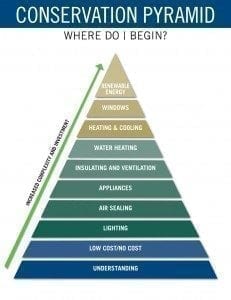Gains in energy efficiency is touted as one of, if not the cheapest and most effective, means of simultaneously addressing rising and volatile energy costs, the slow pace of job creation and economic growth, and climate change. This year’s extreme weather and geopolitical crises bring the point home.
The Obama Administration, state governments and regulatory agencies have launched a variety of incentives and financial mechanisms to foster gains in energy efficiency and adoption of clean, domestic energy sources, including energy efficiency and renewable energy certificates (EECs and RECs), demand response (DR) revenue and permanent DR payments, rebate programs and investment tax credits (ITCs).
Innovative clean tech financiers are finding ways to monetize, and capitalize on, realized energy efficiency savings and smart grid demand response systems. Aiming to enable small- and medium-sized businesses (SMBs) to reduce their energy bills by carrying out such projects, Joule Assets in late January opened up the market for so-called Energy Reduction Assets (ERAs) to accredited investors.

Investing in Energy Reduction Assets
Having launched the nation’s first ERA fund Joule Assets on March 10 announced its first investment: providing financing that will enable New York HVAC specialist Ener.co to offer in-house financing for its flagship NanoSure product.
Though much attention is focused on the largest corporations, vast potential to realize energy efficiency gains exists among small and medium-sized businesses (SMBs). Numbering some 23 million, small businesses alone account for 54 percent of all sales made in the U.S. economy. They account for 55 percent of total employment and 66 percent of net new jobs since the 1970s, according to the U.S. Small Business Administration (SBA).
Through its ERA Fund, Joule Assets offers accredited investors the opportunity to earn what founders Mike Gordon and Dennis Quinn are confident will be above average risk-adjusted returns by investing in a portfolio of SMB energy efficiency and demand response projects. Opening up what was a “closed and untapped financial market,” Joule has raised some $100 million in capital on the way to a goal of $300 million to $400 million.
As they explain,
“Energy control and conservation technologies (like demand response and energy efficiency) are generating lucrative revenue streams which can only be accessed by electric utilities and their participating customers.
“By aggregating small and medium efficiency projects ($50k-500k), financing is streamlined and features like performance-backed insurance and medium term service-based investments become available.”
Gordon and Quinn know what of they speak. Prior to creating the ERA Fund, Gordon founded ConsumerPowerline and managed more than 1 gigagwatt (GW) of ERAs that generated 30% annual returns while distributing $100 million to commercial customers before the company was acquired by Constellation New Energy. Quinn co-founded Celerity Energy, realizing returns in excess of 70% per annum over a three-year period before it Celerity was acquired by EnerNOC.
Energy efficient HVAC
Through the ERA Fund, Gordon and Quinn are now offering accredited investors the opportunity to participate in this market.
Explaining the rationale for making Ener.co and its NanoSure product their first investment, they stated, “Existing buildings consume more than 60 percent of the nation’s electricity, but initial project costs have served as barriers to energy efficiency.
“Commercial buildings with heavy indoor air conditioning needs are a particularly ripe market for energy efficiency measures, and Ener.co’s NanoSure has proven to dramatically improve energy efficiency of HVAC systems while also prolonging the life of the existing HVAC units. With the help of Joule Assets, Ener.co is able to improve commercial buildings at their core.”
Ener.co CEO Patrick Rathje attested to the unrealized potential of innovative energy efficiency products and the difficulties inherent in financing them.
“Despite the large demand for NanoSure, we were in a vicious cycle in which building managers saw the benefits, but were hamstrung by upfront costs and budget issues,” Rathje was quoted in a press release.
“The in-house financing ability that Joule Assets affords us accelerates the sales cycle and allows us to green light more projects for our customers who will make a low monthly payment out of savings and incur no upfront costs.”
Added Joule Assets CEO Gordon, “Our model allows energy efficiency vendors to bring project financing in-house, providing them with new decision making power over which projects receive funding and exponentially expanding their project pipelines.
“We selected Ener.co because it continues to demonstrate impressive energy efficiency results, has a long pipeline of approved projects in need of financing and represents the kind of energy efficiency projects that we believe will reap large financial and energy savings rewards across the board.”
Graphic credit Arrowhead Electric Cooperative



I love the infographic, first of all. It’ll go a long way towards illustrating an action plan for conservation. This NanoSure product is definitely interested, and I’d love to see more about it. We can all start conserving at home, however, in making sure our appliances and energy use are all efficient.